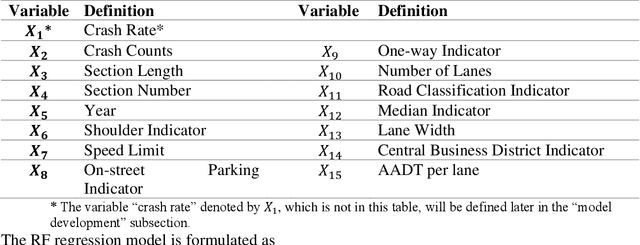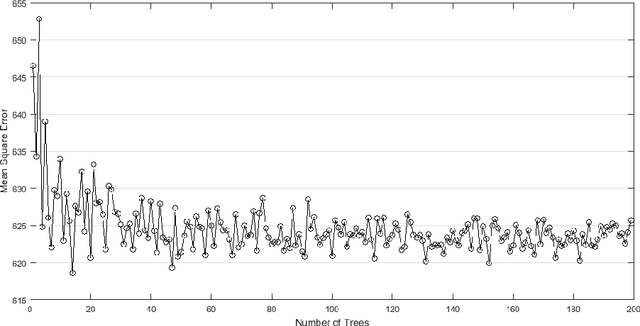Impact of Narrow Lanes on Arterial Road Vehicle Crashes: A Machine Learning Approach
Paper and Code
Nov 07, 2019



In this paper we adopted state-of-the-art machine learning algorithms, namely: random forest (RF) and least squares boosting, to model crash data and identify the optimum model to study the impact of narrow lanes on the safety of arterial roads. Using a ten-year crash dataset in four cities in Nebraska, two machine learning models were assessed based on the prediction error. The RF model was identified as the best model. The RF was used to compute the importance of the lane width predictors in our regression model based on two different measures. Subsequently, the RF model was used to simulate the crash rate for different lane widths. The Kruskal-Wallis test, was then conducted to determine if simulated values from the four lane width groups have equal means. The test null hypothesis of equal means for simulated values from the four lane width groups was rejected. Consequently, it was concluded that the crash rates from at least one lane width group was statistically different from the others. Finally, the results from the pairwise comparisons using the Tukey and Kramer test showed that the changes in crash rates between any two lane width conditions were statistically significant.
 Add to Chrome
Add to Chrome Add to Firefox
Add to Firefox Add to Edge
Add to Edge